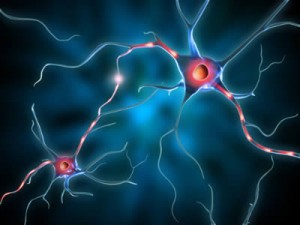Heroin Addiction Rehab
Journey Malibu’s luxurious, intimate Heroin addiction rehab facility offers a compassionate detoxification phase, followed by a customized program of recovery that is unmatched anywhere else.
 Your stay with us will begin, if necessary, with our safe, gentle, staff supervised detoxification process for your Heroin addiction. We are committed to getting you started comfortably on your path to recovery. We understand the challenge of “kicking” opiates, and that, for some, the fear of the detox process may keep them from seeking treatment entirely. At Journey Malibu’s Heroin addiction rehab, we believe that the fear of detoxing should never be an obstacle to recovery. That’s why our independently affiliated physician is certified in the most advanced Subutex and Suboxone treatment available. Buprenorphine and Naloxone can be administered, if appropriate, and will ensure that your personal experience of opiate detoxification is effortless and comfortable. Freedom from addiction is the goal and detox is the beginning. Call us now for details on our pain-free detox protocols.
Your stay with us will begin, if necessary, with our safe, gentle, staff supervised detoxification process for your Heroin addiction. We are committed to getting you started comfortably on your path to recovery. We understand the challenge of “kicking” opiates, and that, for some, the fear of the detox process may keep them from seeking treatment entirely. At Journey Malibu’s Heroin addiction rehab, we believe that the fear of detoxing should never be an obstacle to recovery. That’s why our independently affiliated physician is certified in the most advanced Subutex and Suboxone treatment available. Buprenorphine and Naloxone can be administered, if appropriate, and will ensure that your personal experience of opiate detoxification is effortless and comfortable. Freedom from addiction is the goal and detox is the beginning. Call us now for details on our pain-free detox protocols.
What Is Heroin?
Heroin is a naturally occurring substance extracted from the seed pod of the Asian opium poppy plant. As such, it is an opiate drug that can be synthesized from morphine. Heroin is most commonly used by heroin addicts as a white or brown powder, though sometimes it comes in the form of a black sticky substance which is called “black tar heroin.”
The drug can be delivered into the heroin addict’s body via a variety of methods — including being injected, snorted/sniffed, or smoked—routes of administration that rapidly deliver the drug to the brain. Injecting (also known as “slamming” or “shooting up”) is accomplished through the use of a needle, which administers the drug directly into the bloodstream. Snorting is the process of inhaling heroin powder through the nose, where it is absorbed into the bloodstream through the nasal tissues. Smoking involves inhaling heroin smoke into the lungs. All three methods of administering heroin can lead to the need for heroin addiction rehab and, likewise, all methods present serious health risks to the heroin addict.
 The Challenges Of Heroin Addiction
The Challenges Of Heroin Addiction
Once heroin enters the brain, it is converted into morphine and binds to receptors known as opioid receptors. These receptors are located in many areas of the brain, especially within the VTA (ventral tegmental area), nucleus accumbens, and cerebral cortex. These are the reward centers of the brain that produce desirable feelings of pleasure and a drive to replicate the experience.
Opioid receptors are also located in the brain stem, where they are used for automatic processes critical for life, such as breathing, blood pressure, and arousal. This is one reason heroin overdoses are often accompanied by a suppression of respiration.
Along with thrusting it’s users into the grips of addiction, heroin also presents a variety of serious health risks to those who abuse it, including fatal overdoses, spontaneous abortions, and—particularly in users who inject the drug—infectious diseases, including HIV/AIDS and hepatitis. Chronic (regular) users can also develop collapsed veins, infection of the heart lining and valves, abscesses, and liver or kidney disease. Heart and lung problems can also often accompany the unchecked abuse of heroin. As the health of the heroin user decreases, pulmonary complications, including various types of pneumonia, may result from the poor health of the heroin abuser as well as from heroin’s depressing effects on respiration. As with cocaine, heroin, especially when it is obtained on the street, is often laced with other toxic contaminants or additives that can clog blood vessels leading to the lungs, liver, kidneys, or brain, and ultimately causing permanent damage to vital organs.
Withdrawal From Heroin Addiction
Withdrawal symptoms can appear as early as a few hours after the addict stops using, and can include restlessness, insomnia, diarrhea and vomiting, muscle and bone pain, and cold flashes with goose bumps (“cold turkey”). Heroin addicts may also experience severe craving for the drug during their withdrawal, which can precipitate continued abuse and/or relapse. The most dramatic withdrawal symptoms will usually appear between 48 and 72 hours after the last dose of the drug was administered, and will typically subside after about 1 week. But this is not always the case. Some addicts may show persistent withdrawal symptoms for months. Heroin withdrawal is thought to be less dangerous than alcohol or barbiturate withdrawal, but the fact is, sudden withdrawal by a heavily dependent heroin addict in poor health is occasionally fatal. Such was the case with the Grateful Dead’s Jerry Garcia, who died going through Heroin addiction rehab at a California Treatment Facility.
What Treatment Options Exist For Heroin Addiction Rehab?
At the Heroin Addiction Rehab at JOURNEY MALIBU, we offer a wide variety of treatments for the heroin addict. Our program is applied by a compassionate, experienced team of caregivers who are equipped to guide you along the rewarding path of recovery.
Our experience at our California Drug Rehab has taught us that when medication treatment is combined with other support programs, patients are often more able to discontinue their use of heroin (or other opiates) and return to stable and productive lives. At JOURNEY MALIBU’s Heroin addiction rehab, treatment may begin with an clinical based assisted detoxification to help patients withdraw from the drug safely and comfortably. Medications such as clonidine and buprenorphine may be administered to help minimize symptoms of withdrawal. It should be remembered, however, that detoxification alone has not been proven to prevent relapse in the heroin addict… but it can be an effective first step.
Other medications that we are open to using at our Heroin Addiction Rehab to help prevent relapse include the following:
- Methadone, a drug that has been used for more than 30 years to treat heroin addiction. Methadone maintenance treatment is usually conducted at our Rehab Facility as part of a specialized opiate treatment program.
- Buprenorphine, a more recently approved treatment for heroin addiction (and other opiates). Not all recovering heroin addicts at our Rehab Facility will respond to buprenorphine, however; in which case, they may require continued treatment with methadone.
- Naltrexone is another drug approved for treating heroin addiction but one that has not been widely utilized due to poor patient compliance. Naltrexone as a treatment for opioid addiction is usually prescribed in outpatient healing settings, like those we may refer you to from our Journey Malibu Heroin Addiction Rehab. In this case, initiation of the Naltrexone treatment often begins after therapeutic detoxification at our Residential RETREATment Facility. Naloxone is a shorter-acting opioid receptor blocker, used to treat cases of overdose.
 At JOURNEY MALIBU, we know there are many effective behavioral treatments available for heroin addiction as well, and many that we employ at our Heroin Addiction Center in combination with some of the above-mentioned medications. These can be delivered in residential or outpatient settings. Among the types of treatment programs you will find at our Rehab Facility are individual or group counseling, therapeutic education on the neurobiology of addiction, and cognitive-behavioral therapy, specially designed by the JOURNEY MALIBU staff to help modify a patient’s expectations and behaviors related to drug abuse, and to increase skills in coping with various life stressors.
At JOURNEY MALIBU, we know there are many effective behavioral treatments available for heroin addiction as well, and many that we employ at our Heroin Addiction Center in combination with some of the above-mentioned medications. These can be delivered in residential or outpatient settings. Among the types of treatment programs you will find at our Rehab Facility are individual or group counseling, therapeutic education on the neurobiology of addiction, and cognitive-behavioral therapy, specially designed by the JOURNEY MALIBU staff to help modify a patient’s expectations and behaviors related to drug abuse, and to increase skills in coping with various life stressors.
So if you’re serious about your recovery, and are determined to overcome your heroin addiction, we hope you’ll make JOURNEY MALIBU your destination.
Please call us at Journey Malibu’s Heroin Addiction Rehab 888-717-5643 to find out if we’re the right solution for the challenges you’re facing. All calls are strictly confidential.

